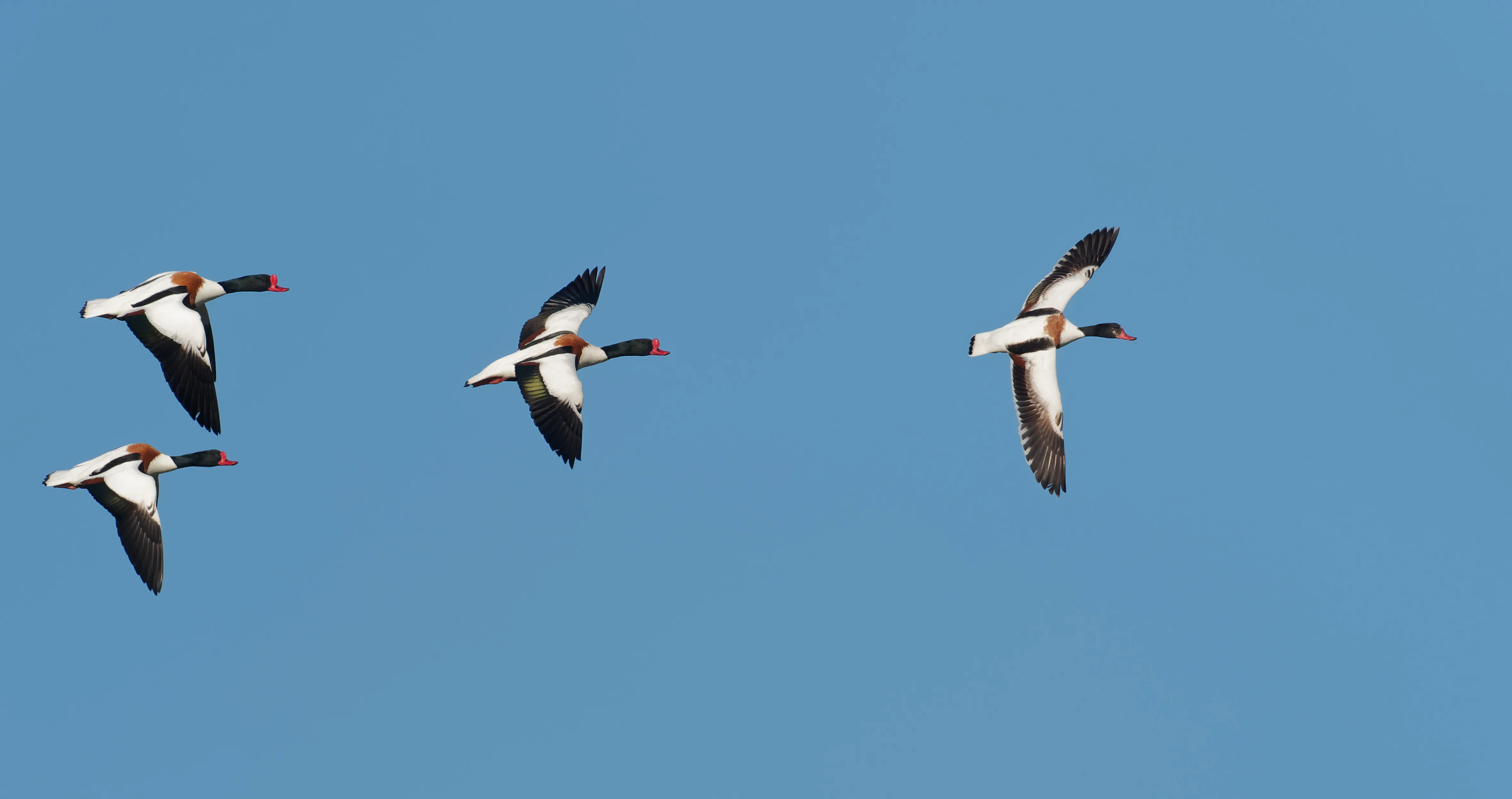Citation
Green, R.M.W., Cook, A.S.C.P., Burton, N.H.K., Franks, S.E. & Green, J.A. 2025. Framework for assessing species vulnerability whilst on migration to a spatially explicit anthropogenic pressure. Biological Conservation 307/111118: doi:10.1016/j.biocon.2025.111118

Overview
Migration is a critical component of animal lifecycles, and human development globally is increasingly interfering with animal migration routes. There is not a generally accepted approach to assess impacts of development on migratory species. This study showcases a framework to enable impacts to be assessed comparatively. It uses UK ducks, geese and swans as a case study to illustrate the variation between species.
Abstract
Animals are having to adapt to increasing anthropogenic activities and the pressures these create. The impacts experienced when encountering novel pressures on migration may be particularly acute compared to those routinely experienced in other parts of the annual cycle. To mitigate avoidable population declines, stakeholders must rigorously assess which species are vulnerable to these pressures and develop effective management solutions accordingly. However, inconsistent approaches to these assessments often hinder regulatory efficiency and decisions.
Here we present a consistent assessment framework for quantifying vulnerability to an identified spatially explicit pressure that might impact populations during migration. Standardised terminologies, methods for consistently scoring sensitivity and exposure, and for quantifying and assessing the role of uncertainty on the vulnerability index, are outlined. The framework is demonstrated using the 29 populations of Anatidae that migrate over UK waters annually and may be exposed to collision risk from offshore wind farms. Sawbills and sea ducks were more vulnerable than swans, geese and other ducks. Even with data uncertainty accounted for, the five most vulnerable species remain consistent, indicating future research and conservation could focus on these species.
This consistent framework makes use of accepted terminologies and can be used to develop vulnerability assessments for any migratory species group to any identified anthropogenic pressure. Outputs can be used to guide research efforts and support the implementation of conservation measures even if uncertainty in data remains. Comparisons between different assessments presented using this framework can be used by regulators to inform strategic planning decisions.
Thank you for your support
This work was funded by the UK Department for Energy Security and Net Zero Offshore Energy Strategic Environmental Assessment programme and the British Trust for Ornithology, with particular thanks to John Hartley (Hartley Anderson Ltd.) who initiated the project.



